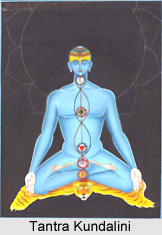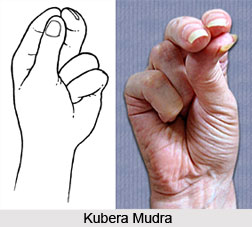 The physiological values of Pranayama are set as per the capacity of the health condition of the person who practices it. Greater the degree of fitness and goodness pranayama can induce on one`s health; the more physiological values can be found.
The physiological values of Pranayama are set as per the capacity of the health condition of the person who practices it. Greater the degree of fitness and goodness pranayama can induce on one`s health; the more physiological values can be found.
The study of the physiological values of Pranayama is more comprehensive; one also needs to have thorough knowledge about the meaning of health. It can be defined as the symmetrical functioning of the different systems operational in the human body. Nervous, the endocrine, the respiratory, the circulatory and the digestive are the chief systems of a living human being. To delve deep into the matter of physiological values of Pranayama, a thorough understanding of systems of human body is needed.
Nervous system functioning can be compared to a huge powerhouse with a networking of wires for distributing electricity to several machines in a factory. The spinal cord, brain, `sympathetic cords` comprise of the powerhouse, the nerves, which have their origin in the brain and also in the spinal cords, represent all those electrical wires. Just like any factory whose machines are put into motion by this electrical current, a human body too works due to heavy impulses as generated in the nerves from the brain and the cords. In any case the body fails to show any physical movements if the nerves and cords gets spoiled or damaged. Incessant rapture of movements even can be life threatening too. Such is the importance of nervous system. For generation of physical movement, the strength generated due to secretion of endocrine glands is most important. This strength is as important as the strength of electric current for running the machines in proper standard.
There are several glands present in a human body. Thyroid is the most popular endocrine gland. Also sex glands of both females and males are quite significant. Defiance of these glands is apparent to every one. With the removal of thyroid from as person`s body, the eyes will become pale, cheeks will go down the face and all the body muscles become `lean` and soft. His hairs will turn gray which makes the person look much older than his usual age. Thus it rightly highlights what important role the endocrine glands play in maintaining the physiological balance, almost at par with nervous system.
The study of circulation system is also a must on the basis of which the physiological values of Pranayama can be discussed later. Both the systems of human body, nervous and endocrine system, have to depend upon the circulatory system, which is necessary for blood supply. The heart, the arteries, the veins and the capillaries constitutes of the circulatory system. It is the function of this system to circulate the blood to every possible tissue in the human body. If the nerves and the endocrine glands do not get the required blood supply, they will deteriorate in their functions. Blood is the key component of the circulation system, which needs to be in pure state for proper functioning. When the blood is laden with `toxins`, the efficiency of the circulatory system becomes the obvious consequence.
How much, the quality of the blood can be kept rich, actually depends upon two other important systems of human body, namely the respiratory and the digestive systems.
In order that the blood may be rich in quality, it must transmit the essential amount of oxygen with it. Also the blood must be affluent in nutritional contents for the tissues present. The inhaled air supply oxygen necessary for the blood while the elements of nutrition is being absorbed from various food items and drinks. The effectiveness of the respiratory system to great extent depends on how much the amount of oxygen the blood can carry. Due to some problems in respiratory system, the oxygen intake can become inadequate. The tissues also will be famished due to this blood deficiency in oxygen. Moreover, the proper functioning of digestive system need to be functional so that rich food items and heavy drinks that one intake to digested and absorbed easily. Otherwise food will be wasted and the blood, ultimately, will get very little amount of nutritional elements. Thus the respiratory and the digestive systems must work efficiently if the blood supply is to be kept loaded in quality.
There is another harmful effect that might occur due to the malfunctioning of the respiratory and digestive system, which has an effect in the counting of physiological values of Pranayama. It fills the blood with loads of toxic wastes. The most poisonous gas, carbon dioxide is constantly being manufactured in human body and it is the blood circulatory system, which carries it to the lungs from where it gets excreted.
But if the effectiveness of this system gets disrupted, this carbon dioxide gas gets accumulated in diverse tissues thereby producing toxic upshots. In the similar manner, if the less digested food wastes are accumulated in a large amount and if the bowels, located in the digestive tube, do not excrete these wastes remain stuck in the colon or even in the small intestine for quite a few days, thereby creating extremely poisonous toxins. Through the walls of the bowels these toxins get into the circulatory blood and then pollute the blood and the harmful blood if circulated throughout the body, leads to the failure of the whole organs of any human body.
Apart from these two excretory organs, kidneys too play a vital role in eliminating the waste products from the human body with the urine. With defective functioning of kidneys, these harmful substances are restored back in to diverse parts of the human body. People suffering from gout have always flawed kidneys. Thus it becomes apparent that the blood in the body to become rich in quality depends to a great extent on the proper functioning of respiratory and the digestive systems and that too, be free from toxic elements, for which the organs of elimination must be well functional.
After discussing in details about the most prominent systems of human physiology and their dysfunctions, which really can act as threat to human health, now it becomes to throw light on the physiological values of Pranayama. In other words, it is to see how effective pranayama can be in the proper running of the vital systems of the human body.
To begin with the organs of excretion, both the bowels and kidneys that are located in the abdomen and the lungs in the chest, was in continuous motion and also get a warm and gentle massage due to the normal respiration and also due to alternative relaxation and contraction of the muscles of the abdomen. It is due to the constant practice of pranayama , both inhalation and exhalation and also constant pauses that are made , actually enhance the movements and mild massages of the kidneys and bowels. This is the aspect of the physiological values of pranayama.
All the congestion is duly relaxed because of the pressure exerted by the Pranayama exercise. The nerves and muscles, which control the functions of the bowels and the kidneys, are all strengthened and shaped up. The physiological values of Pranayama are such that their effects too are retained even for the rest of the day that follows the vigorous exercise of pranayama. Bowels, kidneys, as well as their controlling nerves and muscles remain active for quite a some long period of time.
Lungs too get affected due to Pranayama. While doing the exercise, the chest is opened up to its utmost extent quite a number of times in a day and also lungs are stretched out to their greatest extent. Just like the organs like kidneys and bowels, the lungs too get the healing touch, as a part of the physiological values of Pranayama that has been added upon, which enable them to be functional for the rest of the day.
The organs of the absorption and digestion too receive the benefits accrued due to the physiological values of pranayama.
Vital organs namely, the stomach, the pancreas and the liver that play a very significant role in the digestion of food and drink, receive the healing massage from the movements of diaphragm and the abdominal muscles. Actually the Pranayama accentuates the movement of these muscles and diaphragm, which in tandem affects the digestive organs.
For those people who suffer from constipation and dyspepsia with congestion in liver and simultaneous malfunctioning, Pranayama is a must. It relieves the congestion of liver and cures these diseases. With a well functioning digestive system, absorption system also becomes just right, and the blood gets improved with the essential nutritious elements and these are all the result of the apt technique of Pranayama; hence the physiological values of pranayama cannot be ruled out.
A wide supply of oxygen to the blood circulation is of importance for any person`s health. This supply is increased by Pranayama exercises. As has been stated by various Yogic therapists, unlike any other exercise, due to certain techniques of Pranayama, the oxygen supply increases in the blood circulatory system to a great extent. This is not because during the exercise, a person accumulates a huge quantity of oxygen automatically but actual training of the respiratory system is done in such a way that the quantity of oxygen is enhanced These are the physiological values of Pranayama.
The various Yogi therapists also deals with the question that comes how pranayama helps in enriching the blood with oxygen, which ideally throws light on the physiological values of Pranayama. It is observed that though for the time being a person, during the process of Pranayama, absorbs smaller quantities of oxygen, these arduous exercises so instruct the respiratory system that during the rest of the day respiration is carried on most ably. As a result, larger quantities of oxygen are absorbed throughout the day, than the usual process.
Much has been said about the physiological values of Pranayama, especially that related to Ujjayi, a special type of Pranayamic exercise as has been mentioned by Svaraman Suri. The rate of four rounds of Ujjayi has been prescribed to be done in a minute. This recommendation is for people who practice only `Recaka` and `Puraka`. It has been rightly found out by the Yogic experts that when four rounds of Ujjayi are executed in a minute, the quantity of oxygen absorbed even during the Pranayamic process, is much larger than in ordinary respiration. Again the training of the respiratory system by way of having four rounds of Ujjayi per minute is quite adequate for all practical purposes of maintaining good health. Thus the physiological values of pranayama get increased.
So far it has been seen that the proper functioning of the organs of digestion, elimination and respiration enhances due to Pranayama and also makes the quality of the blood satisfactory. Actually for the distribution of the blood to several tissues of human body, the circulatory system needs to be in order. Heart plays the most vital role. Several scientists of the modern western world accepts the fact that practices in deep breathing give a gentle massage to the heart have accepted it. A thorough research has proved that due to physiological values of Pranayama exercise brought about the changes of blood pressure of the heart. It is interesting to note that the technique of Pranayama as has been suggested by any of the yogic therapists, generates conditions is rather suitable for this blood massage, than the conditions suggested in by scientific therapy of the contemporary period. The process is quite simple. If the main organ of circulation of the human body, namely heart is being kept healthier due to vigorous Pranayamic exercise, the whole circulatory system works in most satisfactory manner.
The physiological values of Pranayama have wider aspects also. The process of the heart getting active does not end there. Doing pranayama like Bhastrika and Kapalabhati aids in stimulating the tissues, arteries, and the capillaries and thus the whole circulatory system gets benefited due to the exercise of Pranayama.
During Pranayamic exercise especially the Bhastrika, the circulation of the blood becomes very swift and smooth and the quality of the blood too becomes rich. This fact is enough to prove the physiological values of Pranayama. This richer and swifter blood circulation brought to the endocrine glands thus makes human lot healthier in the course of action.
As physiological values of Pranayama, the nerves themselves are directly exerted. During Puraka, a type of Pranayama, the diaphragm gets tapered and also become lowered. The muscles of the abdomen also are being controlled and are also more or less compressed. It is due to the combined action of the diaphragm and the abdominal muscles the lower portion of the spinal column is pulled up. To pull up the upper portion of the spinal column, a special Pranayamic exercise, namely Jalandhara Bandha is widely practiced. This pulling up of the vertebral column as a whole, gives message to all the sympathetic codes and also the bases of the spinal nerves, thereby enhancing the physiological values of Pranayama. Vigorous exercise of Pranayama influences even the most important amongst all the major organs of human body, the brain.
The physiological values of Pranayama are accepted by the ancient sages of all time, some of them even claim that the physiological worth of Pranayama even have eliminated all the other exercises for security health of human body. Some experts even claim that the no physical exercise can have one hundredth of the worth in comparison to Pranayama. There is no denying of the fact that Pranayama not only control different physiological functions buy also control life of the human being to a wide extent.




















